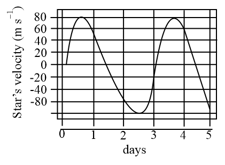Embibe Experts Solutions for Chapter: Gravitation, Exercise 2: Exercise#2
Embibe Experts Physics Solutions for Exercise - Embibe Experts Solutions for Chapter: Gravitation, Exercise 2: Exercise#2
Attempt the practice questions on Chapter 2: Gravitation, Exercise 2: Exercise#2 with hints and solutions to strengthen your understanding. Practice Book for KVPY Aptitude Test - Stream SX Physics solutions are prepared by Experienced Embibe Experts.
Questions from Embibe Experts Solutions for Chapter: Gravitation, Exercise 2: Exercise#2 with Hints & Solutions
A body moves in a circular orbit of radius under the action of a central force. The potential due to the central force is given by, ( is a positive constant). The period of revolution of the body is proportional to,
If the axis of rotation of the earth were extended into space, then it would pass close to,
A ball is launched from the top of Mount. Everest which is at an elevation of . The ball moves in a circular orbit around the earth. The acceleration due to gravity near the earth's surface is . The magnitude of the ball's acceleration while in orbit is,
A planet is orbiting the sun in an elliptical orbit. Let denotes the potential energy and denotes the kinetic energy of the planet at an arbitrary point in the orbit. Choose the correct statement.
The international space station is maintained in a nearly circular orbit with a minimum altitude of and a maximum of . An astronaut is floating in the space station's cabin. The acceleration of astronaut as measured from the earth is,
An object is propelled vertically to a maximum height of from the surface of a planet of radius and mass The speed of the object when it returns to the surface of the planet is
Two satellites and are revolving around a planet in the opposite sense in coplanar circular concentric orbits. At time the satellites are farthest apart. The periods of revolution of and are and respectively. The radius of the orbit of is Then the orbital speed of as observed from
A star mass (equal to the solar mass) with a planet (much smaller than the star) revolves around the star in a circular orbit. The velocity of the star with respect to the centre of mass of star-planet system is shown below:

The radius of the planet's orbit is closest to ()
